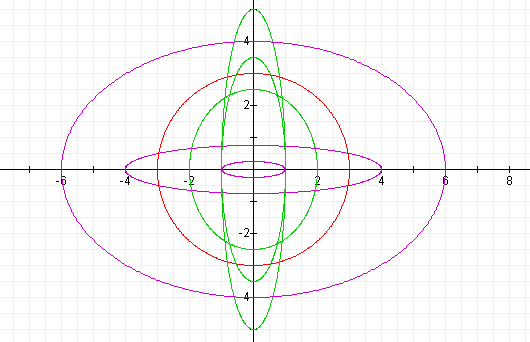

What is a parametric curve?
A parametric curve in the plane is a pair of functions
where the two continuous functions define ordered pairs (x, y). The two equations are usually called the parametric equations of a curve. The extent of the curve will depend on the range of t and your work with parametric equations should pay close attention the range of t.
A parametric curve
Let's consider the parametric equations
x = cos t
y = sin t for 0 £ t £ 2p
The above parametric equations form the following graph.
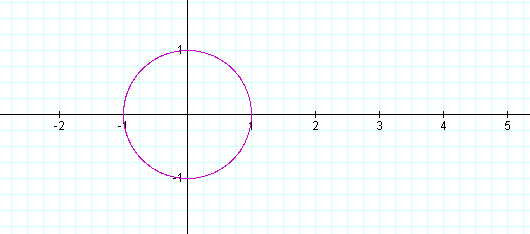
As you see the graph, it is a circle; that is, the curve of the parametric equations is a circle. Then do the curve of a given parametric equations always is a circle? To verify the conjecture you are going to explore t that seems to affect the change of the parametric curves.
The variable t is the angle of rotation. When you change the rotation angle, the parametric curve might be changed or might not be changed. According to the definition of the parametric curve, you can see the variables x and y depending on t, which means if the range of t changes, the parametric curves will be changed. So if t goes 0 £ t £ p, the parametric equations graphs as follows:
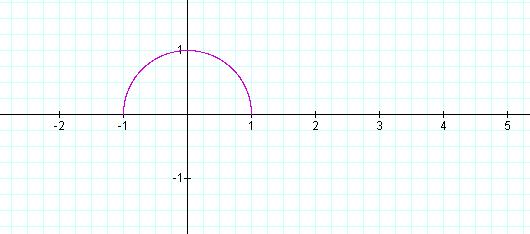
Now, let's change t to 4/p £ t £ 4p /3. Then we have

If t goes around from p to 2p, then what happens?
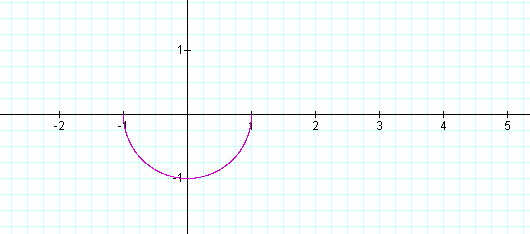
If you want to explore more curves according to different range of t, click here.
Trigonometric substitution
You can also get the new equation from the parametric equations to as a trigonometric function of t,
is obtained. This equation is a standard equation of a circle centered at (0, 0) and with a radius 1.
From the properties of trigonometry, it is true that -1 £ cost £ 1 and -1 £ sin t £ 1 and imply -1 £ x £ 1 and -1 £ y £ 1.
Another parametric curve
Consider the following equations as a variation of the above paremetric equations.
Like the various curves we have already investigated, the given equations have graphs depending on the range of t. However, there are new variables a and b. How do they, a and b, affect to the curve?
First, fix a = 1 and the range of t, for 0 £ t £ 2p, and change the value of a.
1) If b = 2, b = 3, b = 5, then the curves are the followings (think about the reason why the case b = 1 isn't considered.):
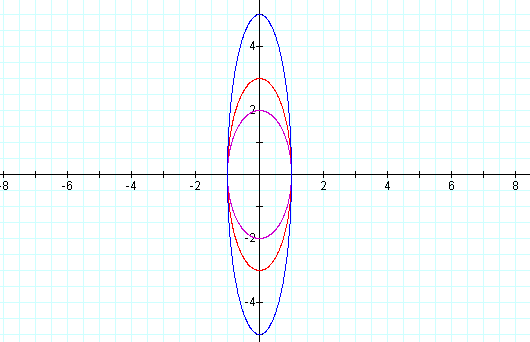
2) If b is in between 0 and 1, how the curves will be changed?

As you see above curves, when the value of b increases, in other words, b goes to 1 that is the value of in this case, the curve becomes round, but not a circle.
Second, fix b = 2. Similarly, you can observe the different curves according to a as follows:
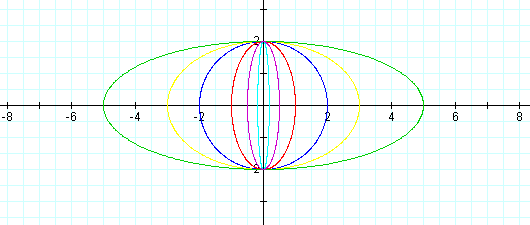
Here you can notice the curve is a circle when a is equal to 2 that is the very value of b fixed. Then can you say that when a equals to b the parametric curve is a circle? From the following you can see how it is working.
Trigonometric substitution
In general, we can draw the standard ellipse equation from the parametric curve. That is,


In particular, when a = b we have
that represents a circle having a center at (0, 0) and radius a (a>0).
Now, you can see the changes according to the value of a and bs in the equation

When a > b, we get the major axis on the x-axis and the minor axis on the y-axis. When a = b, we have a circle. When a < b, we get the major axis on the y-axis and the minor axie on the x-axis.
